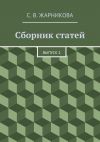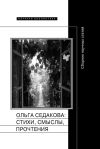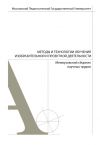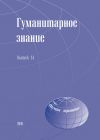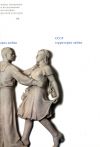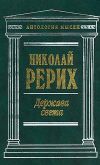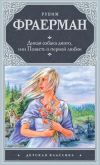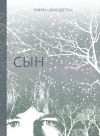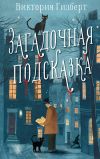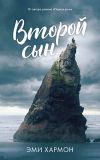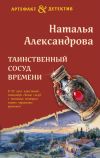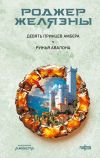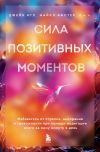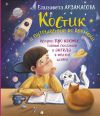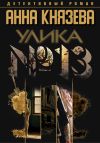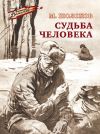Текст книги "Сборник статей. Выпуск 1"
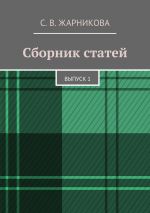
Автор книги: Светлана Жарникова
Жанр: Современная русская литература, Современная проза
Возрастные ограничения: +12
сообщить о неприемлемом содержимом
Текущая страница: 7 (всего у книги 15 страниц)
B. Grakov says: «For some now unfathomable reasons of an inner order, during their first periods of between the 16th and 12th centuries B.C. the Timber-Frame tribes demonstrated constant migratory tendencies».
During the same period Andronovo tribes display similar tendencies and, evidently towards the middle of the second millennium B.C. began to move intensively eastwards. Kiselev places the Andronovo culture between the 17th and 12th centuries B.C.26 Kosarev says that: «In the transition period from the Neolithic to the Bronze Age Andronovo traditions of ornamental design localized for the most part in regions contiguous to the Southern and Central Urals.»
He has dated the formation of the Andronovo type Cherkaskul, Suzgun, and Yelovo cultures as existing on the southern fringe of the West Siberian taiga and in the northern part of the forest steppes within the last quarter of the second millennium B.C. He concludes that «the regions of the localization of the listed ornamental (cultural) traditions should evidently be associated with definite ethnocultural areas».
The Andronovo tribes were both farmers and stock-raisers, as repeatedly stressed by all the students of their culture. Thus, M. Gryaznov noted the prevalence of beef and dairy cattle in Andronovo herds. Describing what must have induced Andronovo tribes to migrate eastwards in the second half of the 2nd millennium B.C. Kosarev notes: «Evidently the Bronze Age migration boom, more specifically the far-ranging Andronovo treks to the Altai, the northern regions of the Ob basin, the Khakassian Minusinsks depression and the northern regions of the land between the Ob and the Irtysh Rivers were largely due to the frequent droughts of the xerothermic period which many scientists believe incident to the Andronovo epoch.» During that period, due to growing dryness accompanied by the drying up and disappearance of many lakes and rivers, the periodical forest fire hazard increased greatly, which must have changed the scenery of the southern fringe of the West Siberian taiga, engendering large expanses of steppes and forest-steppes. «The frequent forest fires resulted in firesites continuing throughout the initial period of reforestation, that is during the forest-steppe stage».
The extensive pastures, plentiful, fertile floodlands and conducive climate may have all caused the growing Andronovo population to migrate bringing along the traditional ornamental motifs of decor and the traditional rituals, as cherished memories of their ancestral homeland.
The classical Fedorovo version of richly ornamented Andronovo pottery has been recovered primarily from barrows. Kosarev hence conjectures: «The highly decorative pottery of the classical Andronovo style with its profuse geometrical ornamentation was of a ritual nature which is why it was pjfrticularly characteristic of barrows and altars».
This points to a ritual sacred significance of the lushly ornamented pottery, with decor so reminiscent of the ornamental motifs in the late Early period and early Middle period of the Tripolye-Cucuteni culture. On the classical Andronovo (Fedorovo) – pottery the characteristically Tripolyan meander spiral and swastika, acquire greater diversity, through preserving the old archetype. Moreover, we know that precisely proceeding from these ornamental motifs experts identify all the different types of Andronovo cultures. Describing the specific character of the ornamental decoration of the pottery in question, Kiselev says that it is most singular, and that the provenance of the different motifs is zonal and that the place of a motif in each tone is usually the same.» He also says that the intricately formed Andronovo ornamental patterns «in all likelihood were seen as conventionalized symbols… and their specific meaning, their symbolical significance is stressed by their specific complexity». M. Khlobystina is still more specific «Evidently, there existed a kind of communal nucleus, a community bound by norms of patriarchal law, which in turn possessed definite graphic symbols for clan affiliation, which the historian regards as encoded in the intricate interweave of the geometrical motifs of carpet-design pottery decor. It may be presumed that the dominant element of such ornamental motives is a range of figures disposed on the vessel’s shoulders. Evidently, a study of their number and their combination, – of Z-signs meanders, broken lines and their variations – may be definitive for elucidating the structure of each community.»
We share Khlobystina’s view of the sacrosanct tradition and the meaningful content of Andronovo decor, for it was not fortuitous for such decorated vessels to be deposited in graves, where they most likely discharged the function of a clan or tribal totem, serving as a kind of identify card on the dead person’s journey to his ancestors who by this token were to recognize him as a member of their clan or tribe. In this respect the ornamental pattern on Andronovo pottery likewise acted as a talisman on the journey into the hereafter.
Hence, we may once again state – a point that must be specially noted – that the carpel-design decor on Andronovo pottery was most likely a totem, a symbol of clan and ethnic affiliation for the person whose possessions were thus decorated. This evidently continues throughout the Karasuk period between the 17th and 12th centuries B.C., when the Scyth-Siberian Animal Style developed and during the Tagar period between the 7th and 1st centuries B.C. when often encountered on the celebrated open-worked Minusinsk belt plaques, in addition to representations of animals, is an orgamental design characteristic of Andronovo pottery decor, more specifically a lattice of 5-symbols (Fig. 11). These clasps or buckles, common throughout the middle reaches of the Yenisei River during the 3rd-1st centuries B.C. are to be met with the Ordos and Inner Mongolia – apparently due to the migrations starting at the turn of the Bronze and the beginning of the Iron Age of the tribes populating the southern fringe of the West Siberian taiga to the more southern regions. Responsible was apparently the wetter climate wich drastically expanded swamps and caused the taiga to encroach upon forest-steppes and steppe-lands territories. Nonetheless, yet in the Tashtyk period, extending from the 1st century B.C. to the 5th century A.D., the tribes populating the Minusinsk depression were distinctly Europoid, which is borne out by the terra-cotta portrait mask recovered from some family burial vaults. Kiselev quotes a Chinese chronicler who noted that the «Kyrgiz», who inhabited what is today Khakassia, had «red hair, rosy cheeks and blue eyes». He adds that the 8th-century scribe Ibn Mukaffa had written of the Kyrgiz that they had «red hair and white skins». The same is reported by a Tibetan source noting that the K’inc’a (the Kyrgiz) had blue eyes, red hair and «a disgusting, i.e., unlike the Tibetan, Mongoloid) appearance. Further, among the items Kiselev recovered from the ruins of an edifice near Abakan are some fascinating bronze door handles of local workmanship, that represent the fantastic countenances of horned genii which «forcefully emphasize the non-Chinese features. At any rate they are even more Europoid than the most Europoid of contemporary Tashtyk funerary masks.» He adds: «The mask handles convey distinctly Europoid features, particularly emphasized by the highbridged nose. We see a Europoid’s large features, of the type prevalent in Southern Siberia from oldest antiquity and virtually up to the start of the Christian era.»
We may thus state that the traditional ornamental pattern of meander, swastikas, and S-symbols characteristic of Andronovo pottery decor continued to persist throughout Western Siberia and more specifically the Minusinsk depression up to the start of the first millennium A.D., with some motives reaching Ordos and Inner Mongolia.
It should be further noted that timewise the closest affinities with Andronovo decor are to be found in North Caucasian sites of the turn of the second and first millennia B.C., which period almost dovetails with that of the colonization by Andronovo tribes in the 13th century B.C. of Southern Siberia’s steppes and forest-steppes. Apposite instances are afforded by the artefacts that V. Markovin recovered from a burial vault by the village of Enghikal in Ingushetia that date back to the middle of the second millennium B.C. They include plaques and fibulae with disk-shaped finials, embellished with die-stamped swastikas and meanders (Fig. 57). He adds that «regrettably North Caucasian Bronze Age pottery has been but little studied and hardly any comparisons have been drawn between it and the pottery of the steppe cultures»; yet, «… there is no doubt that precisely the steppe tribes from the lower Don area infiltrated the Kuban basin».
Among the artefacts R. Munchayev recovered from the Lugovoi cemetery in the Assinsk gorge in Checheno-Ingushetia, there is a high proportion of bronze plaques in the form of a double oval with die-stamped swastikas in the middle of each (Fig. 40).
He adds that «… these items were always found near the skull or chest which allows to regard them as temple or pectoral plaques,«43 in other words, as protective totems. Note that both in the Nesterovo and Lugovoi cemeteries in the Assinsk gorge, mounds were now and again raised over burials. Munchayev believes that there were cases when the ancient tribes here also erected barrows. All this is most reminiscent of Andronovo tradition – also indicated by the obligatory presence in burials of vessels and adornments, embellished with ornamental motives that are more than traditional of Andronovo artifacts.
In all likelihood analogous functions were discharged by the sheet bronze diadems embellished with an ornamental pattern identical with the decor of the double oval Lugovoi plaques, which B. Tekhov recovered from the Tli graves in Northern Ossetia (Figs. 38 and 39). These diadems are decorated with circles, triangles and lozenges and also as a rule with meander and swastika type motives. Tekhov says that similar diadems were recovered from a Styrfaz chamber-tomb in the Northern Caucasus, from the Armenian village of Geharot and from sites in Azerbaijan and Iran.
He has also indicated the characteristic meander and swastika motives on the Koban-type axes recovered from the same Tli burials.
Swastika-type motives complicated by many protruding lines are also to be observed in the decor of finds unearthed in a number of places in Azerbaijan as for instance, on a clay die and also on the walls of a temple and in the plaster work of an earth dwelling from the ancient village of Sary-Tepe, on the wall by a hearth (Fig. 29) and the pintaderas (Figs. 54—56) of the village of Babadervish, which date back to the 12th-8th centuries B.C.
Consequently, the archaeological finds made in the Northern Caucasus and partly in the Trans-Caucasus, in Armenia and Azerbaijan, provide us with specimens of the use of ancient sacred ornamental motives that are characteristic of Mezin site artefacts decor and of Tripolye-Cucuteni, Timber-Frame and, especially, Andronovo pottery. Moreover, in the Caucasus these motives most likely have the same sacred functions of talisman and possibly of tribal and clan totem as were characteristic of Andronovo and, likely, Tripolye cultures.
We encounter echoes of swastika motives in Scythian jewellery, more specifically in the decor of horse trappings recovered from the Northern Pontine area. A. Meliukova believes that the openwork swastika plaques, also to be encountered in Thracian hoards are of Scythian origin, and adds that they appeared in the Northern Pontine area in the late 6th century B.C. True, in Scythian art, all these forms have been markedly modified and transmuted (Fig. 47) to meet requirements of the conventionalized realistic trend known as the Scytho-Siberian Animal Style.
We would now like to turn to the Vologda material. The appended table furnishes specimens of the traditional ornamental motives of peasant embroideries and ornamental weaving, common in the North-Eastern districts of Vologda region. We noted earlier what the historical and ethnic situation in these parts was like and we have no reason to question the Slav, or rather, East-Slav, Russian origin of these ornamental patterns. All the samples supplied are details of elaborate ornamental patterns that embellished headgear, sashes and belts, aprons, shirts and blouses and towels, items mostly sacred that beside having a purely domestic usage were talismans. One must say that the resemblance is amazing. As in the entire range of the Andronovo decor, in North-Russian embroidery and ornamental weaving, too the compositions are divided into three horizontal registers with the often repetitive top and bottom two enclosing the central register that as a rule displays the vitalmost designs from the angle of semantic significance.
This is precisely where we encounter a diversity of meander and swastika motifs (Fig. 58) which are absolutely identical with the Tripolye (Fig. 52) and Andronovo (Figs. 33 and 34) decor as well as with the North Caucasian and Trans-Caucasian motifs of the 13th-8th centuries B.C. and Scythian decor (Fig. 41). Thus, if the ornament from the Babader vish site. (Fig. 29) embellished the wall behind the altar in a 12th-8th centuries B.C. dwelling had an unquestionably ritual significance the absolutely identical pattern, a composition of lozenges, which adorns the hem of a North-Russian peasant woman’s blouse, is also of a ritual nature (Fig. 31).
The design on the pintadera from the same site has an affinity with the pattern of a wedding towel (Fig. 61) and with the design on the stitched inset for a Vologda towel (Fig. 59). Further, the detail from the ornamental pattern of an Andronovo vessel (Fig. 18) is almost identical with that of the embroidered hem of a blouse (Fig. 24), while the embroidered towel end (Fig. 5) is absolutely identical with the intricate meander weave that embellishes an Andronovo clay vessel of the middle of the 2nd millennium B.C. (Fig. 4) etc. etc. (see Figs. 19, 20, 22, 23, 25, 30 and 60). The existence of such affinities is likewise confirmed by east Slav archaeological finds. Thus, the intricate swastika on the clasp or buckle of 1220—1260 (discovered in the late 1960s at the Tikhvin digs in Novgorod (Fig. 36), is identical with the motif that the Vologda peasant woman U. Terebova employed in the 1910s for the wedding towel of her daughter (Fig. 37). Most exciting in this respect is the slate spindle whorl, carrying a scratched design in the form of a six-armed Orthodox cross enclosed within spiral meanders and swastikas that was unearthed at a Slav farming site of the llth-13th centuries near Ryazan and published by G. Polyakova (Fig. 42).
The list could be greatly extended. However we shall merely state that while with different nations similar ornamental patterns may converge, one is hard put to believe that peoples thousands of kilometers and thousands of years apart could – if they are not ethnogenetically linked – invent quite independendy of one another such intricate ornamental patterns, which are identical down to the smallest detail and which, furthermore, discharge the same ritual functions of talisman and totem.
Refraining from far-reaching conclusions, we shall merely note that as our analysis is restricted to the steppes and forest-steppes of the USSR, we have not invoked analogous Indian and Persian items, if we did so the appended table of affinities would be much longer. It is our profound conviction, however that, such material should be invoked as representing a most serious problem for the science of history in the foreseable future. The affinities to be observed in the spiritual and material cultures of the ancient Slavs and, for instance, of the peoples of North Western and Western Indian and Iran – both in olden times and partially today – are too numerous to be ignored.
Currendy, Soviet archaeologists have amassed a wealth of evidence warranting the assumption that actively involved in the ancient cultures mentioned above were the carriers of the ancient forms of Indo-Iranian or Aryan47 languages. Thus Ye. Kuzmina says: «Evidently an in-depth, research, into the Indo-Iranian traditions of the visual arts imagery semantics – for which archaeology has already yielded plentiful evidence – will be crucial studying the intricate ethnic history of Southern-Central Asia and Afghanistan». It must necessarily be added that the quoted region likewise incorporates the vast expanses of the Eurasian steppes and forest steppes.




Древние тайны Русского Севера
Русский Север – его леса и нивы не топтали орды завоевателей, его свободный и гордый народ в большинстве своем не знал крепостного гнета, и именно здесь сохранились в чистоте и неприкосновенности древнейшие песни, сказки, были на Руси. Именно здесь, по мнению многих исследователей, сохранились такие архаические обряды, ритуалы, традиции, которые древнее не только древнегреческих, но даже и зафиксированных в древнеиндийских «книгах знаний» – Ведах, самом древнем памятнике культуры всех индоевропейских народов. О значительной близости славянской и ведической мифологии писал еще в XIX веке А. Н. Афанасьев, который придавал огромное значение схождениям в мифологических сюжетах и обрядовой практике у восточных славян и древних.
Эти схождения и зримые параллели отмечены в трудах русских историков и лингвистов XIX – начала XX веков; достаточно вспомнить работы А. Х. Востокова, И. И. Срезневского, Вс. Миллера, В. В. Бартольда, Н. М. Гальковского и др. Идея единства истоков народной культуры славян и арьев красной нитью проходит в работе В. А. Городцова «Дако-сарматские религиозные элементы в русском народном творчестве». В последнее время ученые стали ставить вопрос о возможном наличии древней индославянской общности, которую отличало не только значительное языковое сходство, но и исключительная культурно-хозяйственная близость, сложившаяся в условиях очень длительного совместного обитания.
Так как большинство современных историков считает, что на рубеже II – I тысячелетия до новой эры племена арьев уже находились в северо-западной части полуострова Индостан и в Иране, то естественно предположить, что сходные религиозные представления и мифология арьев и славян должны были сложиться значительно раньше.
Мысль многих ученых была направлена на поиск исходных земель арьев, их прародины (под этим названием следует понимать те земли, где разрозненные родоплеменные группы складывались в племена, вырабатывая в ходе веков сходные взаимопонятные диалекты и языки, которые становились одним из основных признаков формирующихся этносов).
«Славянский язык – это индоевропейский язык, в целом сохранивший архаический тип». Отечественный языковед Б. В. Горнунг считал, что предки арьев (индоиранцев) в конце III тысячелетия до новой эры заселяли северо-восток Европы и находились где-то около средней Волги, а другой выдающийся лингвист В. И. Абаев пишет: «Через ряд столетий пронесли арии память о своей прародине и ее великой реке Волге».
Еще в 20-х годах XX века академик А. И. Соболевский говорил о том, что на громадных просторах европейской России, вплоть до северных областей, господствуют названия, в основе которых лежит какой-то древний индоевропейский язык. Он писал в своей работе: «Исходный пункт моей работы – предположение, что две группы названий (водных источников) родственны между собой и принадлежат одному языку индоевропейской семьи».
Во II тысячелетии до новой эры в северо-западную Индию и северный Иран со своей восточноевропейской «прародины» приходят племена скотоводов и земледельцев, именующих себя арьями.
Часть арьев, и не малая, ушла из Восточной Европы на восток в поисках лучшей доли, но трудно представить себе ситуацию, при которой все население значительной части земель своего исходного расселения покинуло бы их. Скорее всего, такая ситуация просто невозможна, потому что не выявлено исторических причин, которые могли бы вызвать обязательный всеобщий их (арьев) уход из своей «прародины». Вероятно, часть арийских племен осталась дома, на просторах Восточной Европы, чтобы стать предками некоторых будущих народов этой земли. И нет ничего удивительного в том, что историк П. Н. Третьяков приводит слова академика Н. Я. Марра, который считал, что древняя подоснова славянства не ограничивается, например, Поволжьем, а простирается далеко на север, «в те места, которые до последнего времени считались отнюдь не славянскими и занятыми славянами уже на заре так называемого исторического времени». Древние этнические группы восточноевропейского севера, предшествующие переселению сюда из-за Урала групп финно-угров, Н. Я. Марр называл иногда «северными сарматами» или, что еще интереснее, «руссами». Из юго-восточной Европы, с причерноморских земель уходили (как считают почти все историки – причина ухода была наступившая засуха) тысячелетия назад племена арьев, чтобы обрести новую родину в Индии и Иране (правильно: Арьяна – «Земля арьев»). Уходили и уносили с собой свои предания, сказки, мифы, верования, обряды, свои песни, своих древних богов.
В 1903 году в Бомбее была впервые издана книга со странным и интригующим названием «Арктическая родина в Ведах». Автор ее, замечательный ученый Бал Гангадхар Тилак, посвятил всю свою жизнь исследованию культуры родного народа. Тилак долго и тщательно изучал древние предания, легенды и священные гимны, рожденные в глубинах тысячелетий далекими предками индоарьев и иранцев. И вот, суммировав те странные явления, которые были описаны в священных книгах индийцев (Ведах) и иранцев (Авесте), Б. Тилак пришел к выводу, ошеломившему его современников: родина предков индоиранцев находилась на севере Европы, где-то около Полярного круга.
Книга произвела на многих современников писателя впечатление разорвавшейся бомбы. Кто-то считал это добросовестным заблуждением, кто-то – сказкой, а кое-кто и фальсификацией. И уж никак не укладывалось в голове, каким образом север Европы мог быть «благодатным краем», а ведь именно таким описывали его гимны Ригведы, самой древней из Вед.
Но в общем гуле недоверия раздавались и другие голоса, голоса тех, кто поверил Тилаку и также пошел в поиск по предложенному индийским ученым пути. Результаты не замедлили сказаться, и вслед за книгой Тилака вышла в 1910 году еще одна работа – книга русского ученого Е. Елачича «Крайний Север как родина человечества».
Как и в работе Б. Тилака, в книге Е. Елачича приводятся многочисленные выдержки из древних текстов Ригведы и Авесты, объяснить которые могла только «северная» гипотеза их происхождения.
Созданные в глубокой древности общими предками славянских и индоиранских народов гимны Вед, наряду с древнеиранской Авестой, считаются одним из древнейших памятников человеческой мысли.
Так какие же многие факты, сохраненные в мифах, преданиях, молитвах и гимнах, свидетельствуют о том, что создавались они на крайнем севере Европы? В частности, это описания тех природных явлений, которые, конечно же, не могли возникнуть в Индии. Только в приполярных широтах во время полярной ночи видно, как звезды описывают около стоящей неподвижно Полярной звезды свои суточные круги, создавая иллюзию круга неба над кругом земли, скрепленных как колеса неподвижной осью.
В гимнах Ригведы и Авесты говорится о том, что на родине арьев полгода длится день и полгода ночь, а «год человеческий – это один день и одна ночь богов».
Естественно, жизнь вдали от Северного полюса не могла породить представления о долгой полярной ночи и о дне, длящемся полгода. Как не могли люди, живущие вдали от севера, воспеть зарю такими словами:
По правде, это было много дней,
В течение коих до восхода солнца
Ты, о заря, была видна нам!
Многие зори не просветлились до конца,
О, дай, Варуна, нам зори до света прожить.
Здесь певец древнего арийского гимна обращается к могущественному владыке небесного океана, хранителю космического закона и правды на земле богу Варуне с просьбой помочь пережить длинную многодневную зарю и дожить до дня. Он просит:
О, дай нам, длинная темная ночь,
Конец твой увидеть, о ночь!
Интересно, что и в Ведах и в Авесте сохранились воспоминания о полярной ночи, которая длится 100 дней в году. Так, в индийском богослужении есть обряд подкрепления бога-воина и громовержца Индры ритуальным хмельным напитком «сомой» во время его борьбы за освобождение солнца от плена, который длится сто суток. В древнеиранской Авесте, где также рассказывается о борьбе бога-воина Тшитриса за солнце, жрецы подкрепляют его питьем сто ночей. Надо сказать, что предание о борьбе за освобождение солнца от долгого плена, идея которой могла быть внушена лишь полярной ночью, часто встречается во всей мифологии Вед.
В древних индийских преданиях, на которые обратили свое внимание Тилак и Елачич, есть очень интересные описания полярного сияния, которое представлялось людям то блеском битвы богов света с демонами тьмы, а то и явлением самого верховного божества на земле. Вот его сюжет:
Однажды великий мудрец и подвижник Нарада (стоит заметить, что высочайшая вершина полярного Урала звалась до 1920-х гг. так же – Нарада) отправился на берег Молочного моря и оттуда на северо-запад, где находился большой остров, названный Шветадвипа – «Белый, светлый остров». Достигнув этого острова, где обитали «светлые, сияющие подобно месяцу, люди», он воздел руки к небу и стал призывать в молитве верховного бога, восхваляя его тайными именами. И тогда на призывы Нарады, «зримый во вселенском образе», явился Бог, который был «как бы подобно месяцу духовно чистый, и, вместе с тем, как бы вполне от месяца отличный. И как бы огнецветный, и как бы мысленно мелькнувшее звезды сиянье; как бы радуга, и как хрусталя искристость, как бы иссиня-черный мазок, и как бы золота груды. То цвета ветки коралла, то как бы белый отблеск, здесь златоцветный, там подобный бериллу; как бы синева сапфира, местами – подобный смарагду, местами – подобный жемчужной нити. Так многоразные цвета и образы принимал Вечный Святой стоголовый, тысячеголовый, тысяченогий, тысячеокий, тысячечревный, тысячерукий, а местами – незримый».
Сравним это древнее описание с тем, что пишет о полярном сиянии в конце XIX века С.В.Максимов: «Я был прикован глазами к чудному, невиданному зрелищу, открывшемуся теперь из темного облака. Оно мгновенно разорвалось и мгновенно же засияло ослепительными цветами, целым морем цветов, которые переливались из одного в другой, и как будто искры сыпались бесконечно сверху, искры снизу, с боков… Вот обольет всю окольность лазоревым, зеленым, фиолетовым, всеми цветами красивой радуги, вот заиграют топазы, яхонты, изумруды».
Не правда ли, удивительно похожи эти описания, разделенные многими тысячелетиями? Вероятно, именно как непостижимое, чудесное явление верховного божества поклонившимся ему людям, жителям приполярных областей Европы, где только и можно на побережье Белого и Баренцева морей увидеть такое яркое и многокрасочное зрелище, так как ближе к полюсу северное сияние более однообразно, а южнее – вообще явление крайне редкое. С. В. Максимов отмечает, что на побережьях Белого и Баренцева морей «сполохи» сопровождаются пронзительным звуком. Такое явление характерно именно для этих широт и не встречается больше нигде. Это указание неоднократно встречается в описаниях путешественников и исследователей арктических областей.
Но не только на непрерывную ночь, но и на непрерывный день имеются указания в Ведах.
Вблизи полюса наблюдается, как солнце, поднявшись на определенную высоту над горизонтом, останавливается, стоит на месте и затем идет назад. В Ведах говорится: «Свою колесницу бог Солнца остановил посредине неба». Этот образ невозможно объяснить иначе, кроме как тем, что движение солнца наблюдалось в северных широтах.
Н.Р.Гусева в ряде своих работ подчеркивает, что: «Со времен пребывания арьев в Заполярье лунный календарь играл решающую роль в исчислении месяцев… В полярных областях луна в дни полнолуния проходит через „точку севера“ 13 раз в год, а значит, и весь год делится на 13 лунных месяцев… В Ригведе и других памятниках древней литературы луне посвящено столько гимнов и столько предписаний с ней связано, что до сих пор в сознании жителей этой страны (Индии) культ луны занимает первенствующее место по сравнению с культом солнца – даже многотысячелетнее занятие земледелием не смогло поколебать это соотношение…».
Среди удивительных феноменов земли арьев, описанных в Ведах и Авесте, есть один, исключительно важный, который уже почти столетие привлекает к себе самое пристальное внимание исследователей – это священные горы прародины арьев: Меру в индийских преданиях, Хара – в иранских.
Вот что поведали о них древние предания:
На севере, где находится «чистый, прекрасный, кроткий, желанный мир», в той части земли, которая «всех других прекрасней, чище», обитают великие боги: Кубера, бог богатства, семь мудрецов сыновей бога-творца Брахмы, воплотившихся в семь звезд Большой Медведицы, и, наконец, сам владыка Вселенной Рудра-Хара, «носящий светлые косы», «камышеволосый, русобородый, лотосоголубоокий всех существ Предок». Для того чтобы достичь мира богов и предков, надо преодолеть великие и бескрайние горы, которые протянулись с запада на восток.
Вокруг их золотых вершин свершает свой годовой путь солнце, над ними в темноте сверкают семь звезд Большой Медведицы и расположенная неподвижно в центре мирозданья звезда Дхрува.
С этих гор устремляются вниз все великие земные реки, только одни из них текут на юг, к теплому морю, а другие – на север, к белопенному океану. На вершинах этих гор шумят леса, поют дивные птицы, живут чудесные звери. Но не дано простым смертным всходить на них, лишь самые мудрые и смелые преступали этот предел и уходили навеки в блаженную страну предков, берега которой омывали воды Молочного океана.
Горы, отделяющие север и белопенное море от всех остальных земель, названы в гимнах Веды хребтами Меру, а величайшая из них – Мандарой. В Авесте это горы Хара с их главной вершиной горой Хукарья. И так же, как над горами Меру, над Высокой Харой сверкают семь звезд Большой Медведицы и Полярная звезда, поставленная в центре мирозданья. Отсюда, с золотых вершин Высокой Хары, берут начало все земные реки и величайшая из них – чистая река Ардви, ниспадающая с шумом в белопенное море Ворукаша, «имеющее широкие заливы, широко изрезанное». Над горами Высокой Хары вечно кружит «быстроконное» солнце, полгода длится здесь день, а полгода – ночь. И только самые смелые и сильные духом могут пройти эти горы и попасть в счастливую страну блаженных, омываемую водами белопенного моря-океана.
Правообладателям!
Это произведение, предположительно, находится в статусе 'public domain'. Если это не так и размещение материала нарушает чьи-либо права, то сообщите нам об этом.